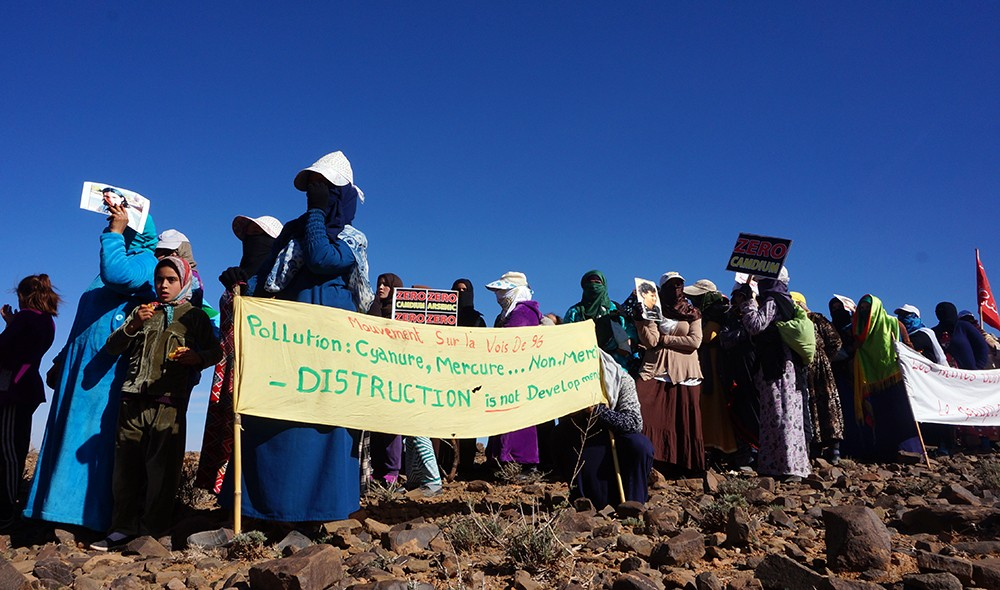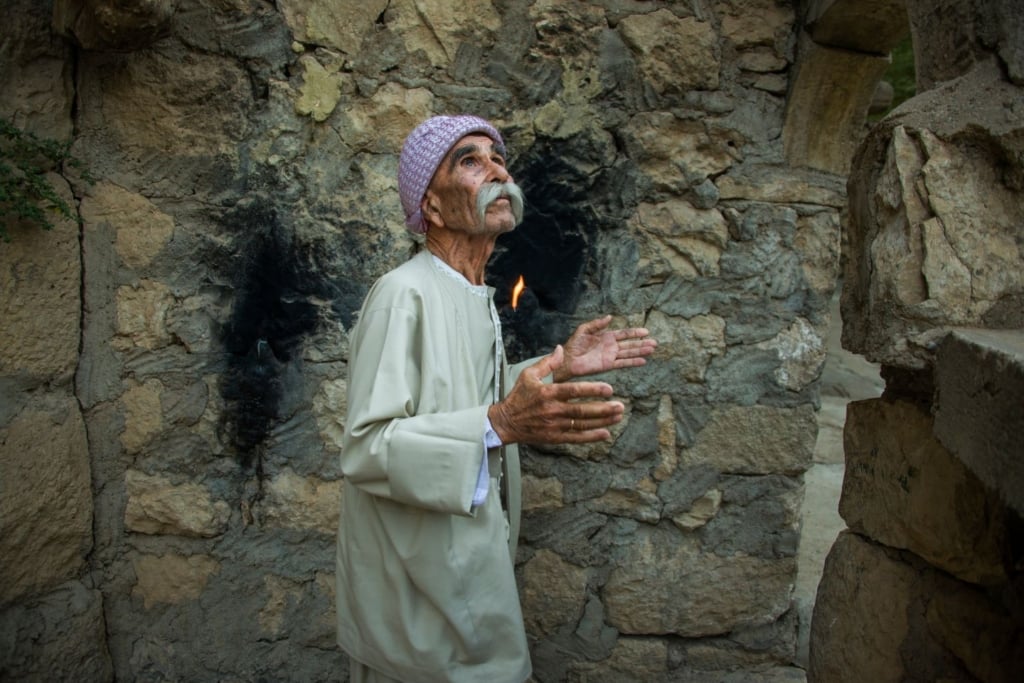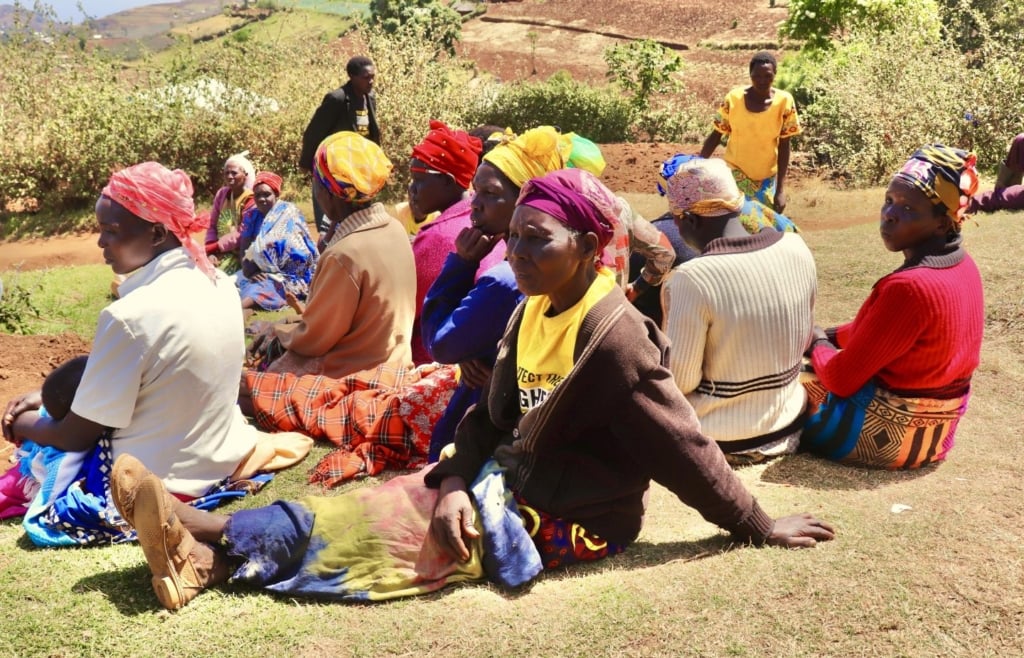Morocco
-
Main languages: Arabic, Tamazight, French
Main religions: Sunni Islam
Main minority or indigenous communities: Amazighs (‘Berbers’) est. 13.3-20 million (40-60 per cent); Black Moroccans est. 3.7 million (10 per cent); Sahrawis est. 90,000; Jews 4,000 (0.01 per cent); Shi’a (no official statistics, but Shi’a leaders estimate several thousand Shi’a citizens in Morocco, centred in the north of the country). Sources include the Cambridge Encyclopaedia of North Africa and Middle East.
Morocco has the world’s largest population of Tamazight-speakers with approximately 12.3 million out of a global Amazigh population of 18.7 million. (‘Berber’ is an antiquated term for both the community and the language and is often regarded as pejorative. Amazigh is the name for members of this indigenous people, while the collective is called Imazighen; Tamazight is the name of their language.) A 2016 official census estimated that 28 per cent of Morocco’s total population of 37 million were Tamazight speakers. However, Amazigh rights activists claim that the real figure is closer to 65-70 per cent, underscoring that, owing to a long oral tradition, many Moroccans speak Tamazight without necessarily reading or writing its Tifinagh characters.
Tamazight speakers comprise three main ethnolinguistic groups: the Rif people, the inhabitants of the Middle Atlas, and the people of the High Atlas and the Sous valley. The country’s Amazigh population has long demanded greater recognition by the state. In 2011, Tamazight was recognized as an official language, and in 2023, Tamazight was introduced as the third language of administration and bureaucracy along with Arabic and French. Driven by the Amazigh cultural movement, Tamazight was introduced into the education curriculum in 2003, although implementation has so far been limited. Since 2011, there have been attempts to increase the number of teachers trained to teach Tamazight, with several higher education establishments introducing Tamazight language training programmes in coordination with the Royal Institute of Amazigh Culture. Morocco has one Amazigh TV channel broadcasting in Tamazight that promotes Amazigh culture and identity.
The country also has a significant Black population. As the Moroccan government does not generate statistics disaggregated by race, the population of Black Moroccans is difficult to quantify. Owing to the lack of official statistical data disaggregated by race or ethnicity, their exact number is unknown, but estimates indicate that they could represent 10 per cent of the country’s total population. Black Moroccans have a long and complex relationship with Morocco’s Arab and Amazigh populations, due to the legacy of the slave trade with Sub-Saharan Africa which is reflected in the endemic racism and discrimination which Black Moroccans continue to face.
Prior to the creation of the state of Israel, Morocco had one of the oldest and most significant Jewish populations in the Arab world. Jewish communities have lived there for over 2,000 years, and cities like Fez haven been important centres of Jewish scholarship and learning. A further influx of Jews to Morocco occurred following the Alhambra Decree in 1492 and the forced expulsion of Jews from Spain. Portugal followed suit in 1496 after which Jews either had to convert or leave. Several thousand Jews found refuge in Fez and the other northern cities of Tangier and Rabat. As elsewhere in the region, Jews were granted the status of dhimmi, People of the Book, which gave them a certain level of protection alongside a subordinate status and an obligation to pay a particular tax, jizya. First in Fez in 1438 and then in other cities, Jewish communities were concentrated into mellahs, reinforcing the sense of otherness. Traders, skilled artisans and scholars belonging to the Jewish community contributed to the economic and cultural life of these cities for over four and a half centuries.
In 1948 there were some 270,000 Jews in Morocco. The combined pressures of Morocco’s independence from France, the creation of the state of Israel and a rise in anti-Jewish sentiments among Arabs led to a steep decline in the country’s Jewish population. Following the declaration of the state of Israel, numerous attacks took place on Jewish premises and individuals. After Moroccan independence their situation improved as Jews were granted full suffrage and near-complete freedom of movement. While Jewish emigration was made illegal between 1956 and 1961, many continued to leave for Israel. By 1960 the population was recorded at 162,420, and in 1967 just 53,000 Jews remained. Today, a small community of around 4,000 Jews continue to live in Casablanca, Fez, Marrakech, Meknes and Tangier. Morocco is currently the only Arab country where Jews enjoy rights and privileges equal to the rest of the community, including government-funded Jewish schools.
Like other states in North Africa, Morocco’s Muslim population is predominantly Sunni (99 per cent according to census data). Most Sunni Muslims in the country follow the Maliki school. Morocco has a small Salafist community that has tended towards the ‘quietist’ approach (a non-political strand of Salafism that focuses its efforts on spreading the word or da’wah, i.e. the theological beliefs of the movement).
-
Environment
The Kingdom of Morocco is located in northwest Africa. Bounded by water on two sides, it fronts the Atlantic Ocean, the Mediterranean Sea and Algeria. To the south is Western Sahara, which has been occupied by Morocco since 1975. Western Sahara is rich in phosphates and fisheries and is thought to have large offshore oil reserves.
Morocco has a varied climate and ecology. The country contains habitats that are globally unique. Facing both the Mediterranean and the Atlantic Ocean and encompassing the High Atlas Mountains and the Sahara, Morocco’s ecosystems include temperate coastal zones, desert and arid lands, forests and mountain landscapes.
It is likely that climate change is already having a range of adverse effects on these different ecological niches and will also affect Morocco’s agricultural sector. There are already signs of significant desertification and salinization encroaching on Morocco’s arable lands, as well as reductions in biodiversity. This is likely to have a particularly adverse effect on indigenous and other rural communities. Amazigh settlements in the country’s arid and semi-arid southeast have developed local agropastoral traditions to cope with low rainfall levels and high temperatures. Climate change is likely to upset these complex human-nature relationships and increase the vulnerabilities of Amazigh communities.
Morocco is also rich in natural resources with significant deposits of phosphates and other minerals and precious metals. Mining and quarrying, and their associated hazardous bioproducts, have caused serious damage to Morocco’s natural habitats, especially near to the sulphide-rich mines such as Kettara, Draâ Lasfar, Ouixane, Axara and Sétolazar mines.
Morocco is experiencing more frequent and intense droughts. 2016 saw the worst drought in three decades, reducing the country’s cereal harvest to 3.35 million tonnes (down 70 per cent on 2015). In addition, 2022 was Morocco’s hottest year in over forty years and driest since meteorological records began. These droughts have hit the country’s oases particularly hard. Oases in Morocco, as elsewhere across North Africa, were subject to exploitation throughout the 20th century, with over two-thirds of Morocco’s oases disappearing. Amazigh nomads, who traditionally winter in the country’s oases, have found the pastures they have historically relied on for their livestock significantly reduced and have been forced to look for alternative livelihoods.
Morocco has also been hit by flash flooding. In 2021, the city of Tétouan in northern Morocco experienced 100 mm of rainfall in nine hours, causing rivers and storm drains to overflow. This led to widespread damage to roads and infrastructure as well as damage to an estimated 275 houses.
Morocco’s mining and other extractive industries have had deleterious effects on groundwater and riparian water supplies. Amazigh communities have long faced multiple forms of marginalization, including water precarity. For instance, the Imider silver mine, one of the most productive mines in Africa, has made use of local water supplies at the expense of the neighbouring Amazigh villages. In response, the Amazigh community of Imider protested in defence of their water rights and against environmental degradation. Taking direct action against the mine which is owned by Société Nationale d’Investissement (SNI), protesters established a camp in 2011 that guarded a key valve used to divert water from a reservoir to the mine. They managed over the next several years to prevent 3 million tonnes of water from reaching the mine, instead directing the supply towards their agricultural lands and the khettaras (traditional irrigation systems).
A 6.8-magnitude earthquake struck Morocco in September 2023. The death toll passed 3,000 people, and 6,600,000 people affected. Children were particularly affected as at least 530 schools were damaged. The epicentre was in the High Atlas Mountains, which meant that many survivors had to endure harsh wintry conditions in inadequate shelters. The Moroccan authorities were joined by international rescue teams who strived to deliver aid and medical assistance to remote communities, some distance from Marrakesh. Mountain roads made bringing aid and rescue services difficult. In addition, poor infrastructure and traffic congestion proved significant obstacles to relief efforts. The earthquake caused large movements of people and goods, as survivors travelled to places of safety. The region is home to many Amazigh communities; already marginalized, they will struggle to rebuild their villages unless they receive significant support from the authorities.
Morocco’s phosphate mining industry causes large quantities of highly toxic pollution that is dumped into the Atlantic. While the Moroccan state has produced few studies on the content of phosphate industry byproducts or how the industry affects local communities, Greenpeace and the World Nuclear Association have stated that Moroccan phosphate is notable for its high levels of cadmium and uranium. These heavy metals have been associated with various cancers, kidney failure and bone disease.
History
Morocco became Muslim in the seventh century, as the Arab conquests pushed indigenous Amazigh into the mountains. Between the eleventh and thirteenth centuries, a Moroccan dynasty ruled north-west Africa and Spain.
The Spanish and Portuguese seized control over territories and established cities along the Moroccan coast as part of their imperial expansion. The enclaves of Ceuta and Melilla became Portuguese in 1415 and Spanish in 1497 respectively. Portugal and Spain were ruled by a single monarch (the Iberian Union) from 1580 to 1640, which was when Ceuta passed to Spain. Casablanca and El Jadida were Portuguese for a couple of centuries from the 1500’s onwards. Continued Spanish control over Ceuta and Melilla even today remains deeply contested.
Unlike other states in North Africa, Morocco never came under the Ottoman Empire and has rather been ruled since the 17th century by the ‘Alawi dynasty. Taking their name from their kinship with Ali, the Prophet’s son-in-law, their pre-eminence commenced with Moulay Sharif who was proclaimed Emir of Tafilalt in 1631. His son Moulay Al-Rashid consolidated power and became Sultan of Morocco in 1666.
Morocco came under colonial rule between 1912 and 1956. The Treaty of Fez established a French Protectorate in the country, while the north was controlled by the Spanish. The country regained independence on 2 March 1956 and restored the traditional monarchy the following year, when Sultan Mohammed became king. It is worth noting that this date is not officially recognized as a public holiday or the moment of independence; rather, independence is celebrated on the 18th of November, when King Mohammed V returned from exile in 1955. Upon the King’s death in 1961, his son took power as King Hassan II and ruled until his death on 23 July 1999. Since then, his son, King Mohammed VI, the twenty-third monarch of the ‘Alawi dynasty, has ruled the country.
Beginning in 1975 and following the withdrawal of Spain from the territory, the Western Sahara conflict has been a protracted insurgency by the Polisario Front, the armed wing of the Sahrawi Arab Democratic Republic. After Spain relinquished its colonial territory along the Atlantic coast of Africa, Morocco organized a ‘Green March’, relocating thousands of Moroccans into the territory and asserting its sovereignty over the former colony. This was disputed by the indigenous Sahrawi people who made their own sovereign claim over the territory. After fifteen years of conflict, a UN-brokered ceasefire was agreed in 1991. However, this has had only limited political results with intermittent clashes between the Polisario Front and Moroccan forces.
The Perejil Island crisis, which took place from 11 to 18 July 2002, involved a bloodless armed conflict between Spain and Morocco over the small and uninhabited Perejil Island. The incident began when a unit of the Royal Moroccan Navy occupied the island located 250 metres off the coast of Morocco, leading to a series of exchanges between the two countries. Moroccan authorities maintained that the occupation was carried out in order to monitor illegal immigration and to fight drug dealers and smugglers, who used the island as a logistics base. Eventually, the Spanish military expelled the Moroccan infantry that had come to support their Navy counterparts. This event marked a significant low point in the relationship between Spain and Morocco, especially considering the historical context of King Hassan II having orchestrated the takeover of the former Spanish colony of Western Sahara through the Green March.
Nineteen years later, in June 2021, the European Parliament passed a resolution condemning Morocco for using migrants, particularly unaccompanied minors, as a means of exerting political pressure on Spain. The resolution accused Morocco of violating the 1989 United Nations Convention on the Rights of the Child and breaching a 2007 agreement between Morocco and Spain aimed at preventing the illegal migration of unaccompanied minors and ensuring their protection and coordinated repatriation. This resolution followed a heated diplomatic dispute between Madrid and Rabat after approximately 9,000 Moroccan and sub-Saharan migrants, including 1,500 children, arrived in Ceuta on 17-18 May. The incident was allegedly facilitated by passive border guards, further escalating tensions between the two countries.
In recent years, Morocco has witnessed several large-scale armed attacks by Islamist groups. In May 2003, 12 suicide bombers attacked five locations in Casablanca – a Jewish civic association, the Jewish cemetery, the Belgian consulate, a hotel and a restaurant. Thirty-three people were killed in addition to the bombers; more than 100 people were injured. The attacks were believed to have been carried out by Moroccan Islamic Combatant Group (GICM). They were followed by an attack on the Argana café on the renowned Djemaa el-Fna square in Marrakesh in 2011 which killed 17 people. Police concluded that it had been the work of a small cell inspired by Al-Qaida. Al-Qaida’s regional group, Al-Qaeda in the Islamic Maghreb (AQIM) has called for attacks against the Moroccan monarchy and institutions. In turn, the Moroccan government has positioned itself as a key counterterrorist player in the Maghreb and regularly restates its commitment to fighting jihadist groups in the region. Human rights organizations and activists have accused the Moroccan state of human rights violations in its fight against Islamist groups.
Governance
King Hassan II ruled from 1961 to 1999, leading a repressive regime for most of that period before opening the door to some reforms in the late 1990s. In the early 1970s, following two assassination attempts, he crushed efforts involving elements of the military to establish a republic. Opponents of the monarchy faced arbitrary detention, torture and disappearances.
King Hassan II ordered a civilian occupation of Spanish Sahara in 1975, followed by a military occupation as Spain withdrew at the end of the year. From 1976, the Moroccan military engaged in a conflict with the Polisario Front, the resistance force of the indigenous Saharawis. The war had ramifications beyond the border of Western Sahara. It strained relations with Algeria while compounding Morocco’s economic difficulties and so undermining the stability of King Hassan II’s pro-Western monarchy. The active conflict ended in 1991, with the introduction of UN peacekeepers and the expectation that there would be a referendum on self-determination. The 2000s witnessed a series of disturbances, demonstrations and uprisings against the occupation but little in the way of a political settlement. Peace talks remain on-going, with Staffan de Mistura currently acting as the UN broker between Morocco and the Polisario Front.
When King Mohammed VI succeeded his father upon his death in 1999, he accelerated the economic and political reforms that had slowly begun towards the end of his father’s reign. This process included the establishment of a bicameral parliament in 1997. In June 2011, in part as a response to the uprisings that were sweeping the Arab world, King Mohammed VI introduced a series of reforms that would transition Morocco towards a constitutional monarchy. Economic liberalization has increased foreign investment, but the benefits have yet to be experienced by most impoverished Moroccans.
The 2000s and 2010s saw the Islamist Justice and Development Party (PJD) enjoy relative electoral success, with the 2011 elections marking a high point for the PJD. As such, the party was sometimes seen as the ‘success case’ vis-à-vis Islamist parties in the region. In the 2021 general elections, the PJD suffered a severe electoral defeat, with the liberal National Rally of Independents forming a coalition government.
An Equity and Reconciliation Commission (IER) was established by royal decree in 2004. The IER was given a two-year mandate between 2004 and 2006 to investigate forced disappearances and arbitrary detentions between independence in 1956 and the death of King Hassan II in 1999. The commission, which was charged with achieving national reconciliation and addressing past human rights violations, spent 23 months investigating enforced disappearances, arbitrary arrests, torture and sexual violence. The IER stated that it had resolved 742 cases of enforced disappearances and provided economic compensation to 9,779 victims. During its mandate, seven live, televised public hearings were held in six regions. It concluded that 592 people had been killed by the state during the repression of 1956 to 1999. The Moroccan Association for Human Rights criticized the IER for under-reporting the extent of the killings and abuse and for failing to release the names of perpetrators, some of whom it claimed still served in government positions. Western Sahara was excluded from collective reparations. Internationally, the report of the IER was criticized for failing to propose meaningful political reforms related to the powerful grip of the monarchy. The IER’s findings led to no trials and its recommendations are yet to be acted upon.
The Preamble of Morocco’s 2011 Constitution proclaims the Kingdom’s commitment ‘to preserve, in its plenitude and its diversity, its one and indivisible national identity’. This new Constitution admittedly marked a significant advancement in the state’s commitment to protect and promote human rights. However, despite a number of legislative reforms undertaken since 2011 to strengthen Morocco’s institutional and legal human rights frameworks, racial and religious discrimination continues to pervade the country’s social fabric, particularly targeting persons belonging to minorities, namely the indigenous Amazigh, Sahrawis, Black Moroccans and Black sub-Saharan African migrants and refugees.
Article 5 of the 2011 Constitution recognises Tamazight as ‘an’ official language of the State, alongside Arabic, although the latter confusingly remains ‘the’ official language of the state. Article 5 further stipulates that ‘an organic law defines the process of implementation of [the] official character [of Tamazight], as well as the modalities of its integration in education and in the priority domains of public life’. Only adopted in 2019 — a delay which speaks volume about the lack of political will to address and redress the marginalization of the Tamazight language and Amazigh people in both law and practice — organic Law 26-16 provides for the integration of Tamazight in the education system, in legislation, in parliamentary and local authorities’ work, media and communication, culture and art, administration and public services, in the public space, and in the justice system. While the adoption of Law 26-16 was welcome, it has serious shortcomings – most notably Article 31, which provides for delays of up to 5 to 15 years before the coming into force of the Law’s provisions, from the date of its promulgation. In this regard, while Article 21 provides that Tamazight must be incorporated in official documents, alongside Arabic, several civil society organisations have denounced the absence of any mention of Tamazight and its Tifinagh alphabet in the draft Law 04-20 on the Electronic National Identity Card (CINE), adopted in July 2020.
Law 04-16, adopted in February 2020, provides for the creation of the National Council for Languages and Moroccan Culture (CNLCM). This new institution is mandated to protect and develop the two official languages, Arabic and Tamazight, as well as the Hassaniya language and diverse Moroccan cultural and linguistic expressions. It succeeds the Royal Institute for Amazigh Culture (IRCAM), established in 2001 specifically to promote the Amazigh language and culture. Law 04-16 provides for the future dissolution of IRCAM and the ‘absorption’ of its mandate and resources by the CNLCM. This point is of great concern to Amazigh rights activists who remain doubtful that what was not done by the Royal Institute over the years will be effectively achieved by the CNLCM, given its mixed and more bureaucratic mandate, thus potentially marking a significant setback for the protection and promotion of Tamazight-speakers’ language rights.
While Articles 1 and 3 of the 2011 Constitution together establish Islam as the state religion, freedom of worship for all is nonetheless guaranteed under Article 3. Article 41 establishes the king as the ‘Guarantor of the free exercise of worship’. Furthermore, the preamble of the Constitution states that the kingdom is committed to combat all types of discrimination, including on the basis of belief, while Article 431-1 and 431-2 of the Penal Code prohibit discrimination on religious grounds. Finally, Article 220 of the Penal Code makes it an offense punishable with up to 3 years’ imprisonment and a fine to prevent anyone from worshipping or attending a religious service. However, Article 220 of the Penal Code also criminalises incitements to ‘shake the faith of a Muslim or to convert them to another religion’, while Article 267-5, added in 2016, states that anyone ‘who offends the Islamic religion or the monarchy, or incites against territorial integrity’ incurs a sentence of six months to two years’ imprisonment and/or a fine. Non-Muslims, in particular Moroccan Christian converts (of whom there are believed to be 4-8,000, depending on the source), continue to suffer from restrictions unduly imposed on their right to freely practice their religious rites and beliefs. In her 2018 country visit report, the Special Rapporteur on contemporary forms of racism notably stated that registration requests of certain minority religious groups are reportedly being rejected by government and judicial authorities, invoking ‘infringement on the Muslim religion’. Unable to operate legally under the Law on Associations, members of these religious groups are prevented from attending church ceremonies or from gathering publicly for religious purposes.
Moroccan Christians and converts in particular remain vulnerable to state-inflicted and societal harassment, being regularly arrested, interrogated and intimidated by the police, but also subjected to employment discrimination. Furthermore, the criminalization of proselytization under Article 220, which can be broadly interpreted, exposes Christians to the risk of prosecution and arrest solely for discussing their faith with Muslims. Hence, the fear of both state surveillance and social stigma reportedly forces many to conceal their religious faith and practice.
-
Since 2020, Morocco has seen a deterioration in its human rights and a narrowing of its civil society. For instance, In November 2022, the Moroccan authorities arrested the 80-year-old president of the Rabat Bar Association and former human rights minister, Mohamed Ziane. He was sentenced to three years’ imprisonment, after having been accused of a range of crimes, including insulting public officials and institutions, sexual harassment, defamation and marital infidelity. Amnesty International has concluded that the charges are bogus and intended to curb Ziane’s human rights activities.
Morocco and Algeria are engaged in a long-running border dispute and the 1,400-kilometre-long border has been officially closed since 1994. In 2021 Algeria cut its diplomatic ties with Morocco and closed its airspace to Moroccan planes following claims of Moroccan support for separatist Amazigh groups within Algeria. Bad relations were compounded by the Abraham Accords due to Algeria’s non-recognition of Israel. The dispute has greatly hindered North African cooperation and has limited pan-regional energy, security and migration coordination.
The Mediterranean migration issue is also felt in Morocco and has led to racism and state violence against Black people within the country. In June 2022, at least thirty-seven sub-Saharan Africans were unlawfully killed at the Spain-Morocco border by both Spanish and Moroccan security forces. Amnesty International regularly reports on crackdowns, abuses and violence against asylum-seekers, migrants and refugees. The Moroccan Association for Human Rights (AMDH) has reported the forced movement of migrants to remote Algerian border zones and the south of the country.
Black Moroccans
Black Moroccans mostly live in the southern part of the country. Often subjected to racial slurs like Abd (slave) and Khadam (servant), they suffer from social stigma and marginalization. In recent years, the country’s Black population has demanded recognition of its history and an end to anti-Black racism and discrimination. In 2022, the Arab Barometer cited 43 per cent of Moroccans as considering anti-Black racism a problem in the country.
The perpetuation in Moroccan society and media of racist and xenophobic stereotyping casting sub-Saharan African migrants as slaves, or dangerous criminals, ‘prostitutes’, drug dealers and disease-ridden —the latter particularly echoing Covid-19 narratives — is of great concern. Indeed, reports of discrimination in access to services, education, employment, housing, and of physical violence, are commonplace. Yet, endemic racism and the absence of laws specifically prohibiting racial discrimination in Morocco implies that complaints are rarely investigated.
Furthermore, the interaction of gender with other forms of discrimination renders Black sub-Saharan migrant women and girls, especially those with an irregular migration status, highly vulnerable to discriminatory treatment, stigmatisation, abuse and exploitation. A report co-signed by 13 civil society organizations in Morocco in 2018 notably mentions difficulties in registering the birth of their children, or issuance of birth certificates made conditional upon payment of hospitalization fees, but also schools refusing to enrol Black migrant children. Under the guise of an egalitarian society, the treatment of Black Moroccans as second-class citizens remains largely taboo in Morocco.
Tellingly, in 2012 authorities reportedly denied an application to form an association to combat anti-Black racism on the ground that race was deemed irrelevant to the Moroccan context. In April 2019, the Casablanca appellate court dissolved the non-profit cultural organisation ‘Racines’ for allegedly engaging in political activity that ran contrary to the association’s statutes, in application of Article 36 of the Law on Associations. This decision, preceded by the refusal of authorities to issue the association’s registration receipt, followed on from a popular show hosted by Racines, during which criticism of King Mohammed VI’s speeches and policies were formulated by certain guests. This was later described by the Court as ‘clear offenses towards institutions’. Both decisions constituted violations of the rights to freedom of opinion and expression, of peaceful assembly and of association, guaranteed under national and international law.
Amazigh land rights
The question of land rights is central to the rights of indigenous Amazigh, who were dispossessed of their lands during the French Protectorate period by virtue of colonial laws (Laws of 1916 and 1919) neither repealed nor substantively amended since independence. These laws allow the Moroccan government to perpetuate illegal land grabbing in total disregard for the rights of indigenous peoples and the principle of free, prior and informed consent. Of further concern are three laws adopted in 2019. They grant full power to the Ministry of Interior to demarcate collective lands, without consultation or cooperation with Amazigh communities, and to sell, transfer or lease millions of hectares of Amazigh land to foreign or national investors, individuals as well as private and public extractive companies, provided they obtain the signature of a so-called community representative (‘nouab’) actually appointed by local authorities, at the expense of the community’s socio-economic rights and interests. Amazigh indigenous identity is inseparable from the cultural and spiritual relationship binding Amazigh people to their lands. Unfortunately, notwithstanding the government’s commitment to protect Morocco’s biodiversity and reduce inequalities, the dispossession and intensive exploitation of Amazigh ancestral lands and natural resources cause irreparable ecological harm as well as poverty and destitution.
-
General
- Espace Associatif
- Moroccan Association for Human Rights (AMDH)
- Organization Marocaine des Droits Humains
Amazigh
- Réseau Amazigh pour la Citoyenneté
Saharawis
- The Sahrawi Association of Victims of Grave Human Rights Violations Committed by the Moroccan State (ASVDH)
Updated July 2024
Related content
Latest
View all-

11 November 2024
Strengthening Moroccan Civil Society
These diverse participants share a common commitment: advocating for human rights, minority protections, and a more inclusive civic space…
-

18 October 2024
Advocating for Migrant Communities in Morocco
CCSM is working to promote the social and political rights of minoritized migrants.
-
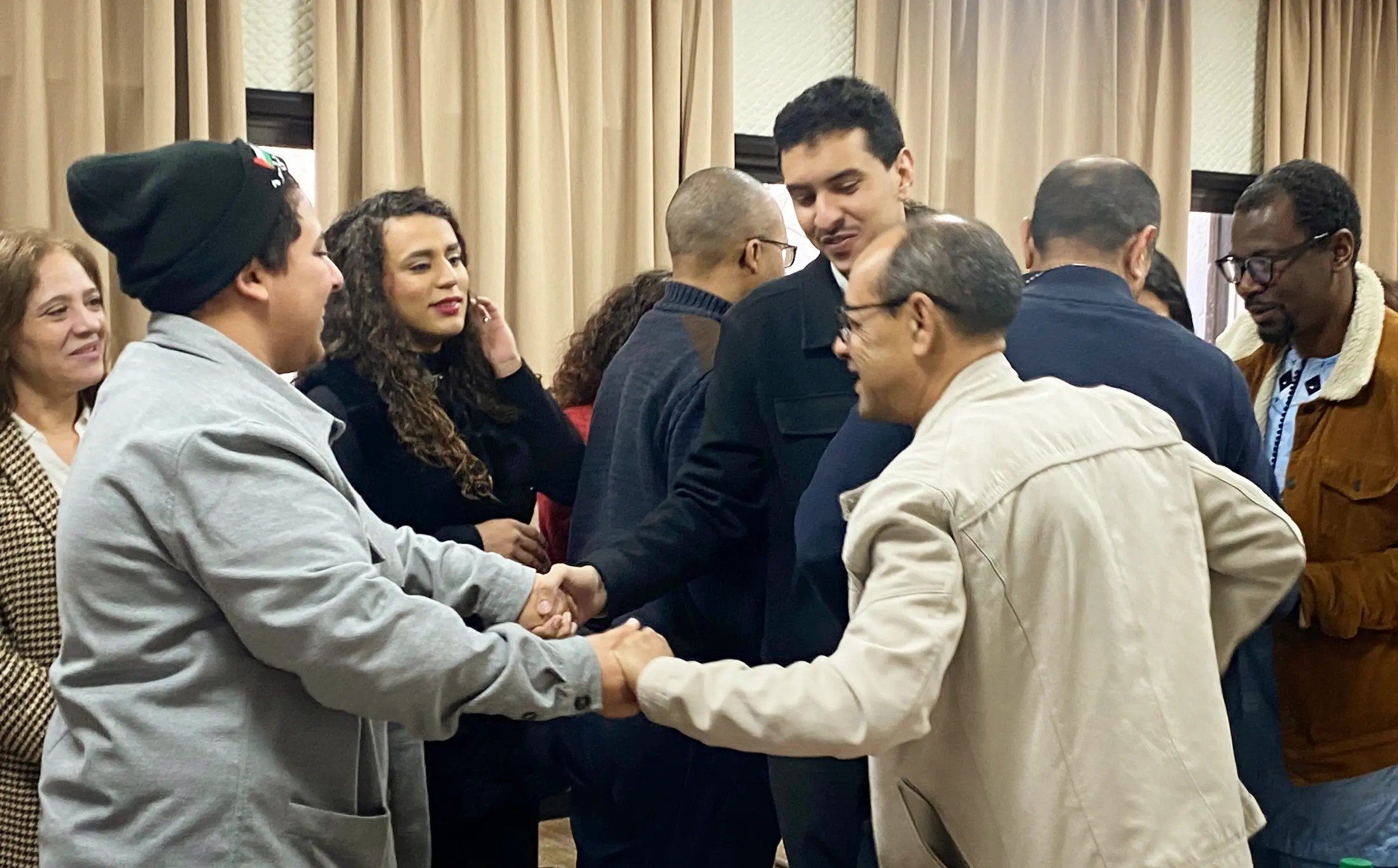
15 April 2024
Enhancing grassroots organizational resilience in a shrinking civic space
Grassroots civil society organizations in the MENA region are excluded from high-level policy spaces and lack sufficient skills to…
Minority stories
-
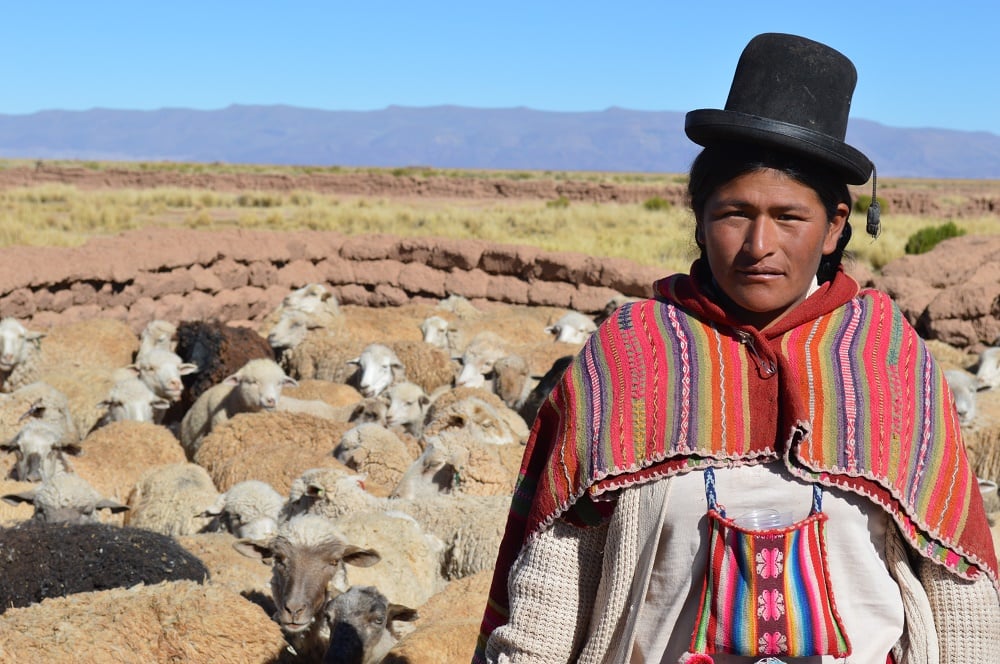
11 July 2016
State of the World’s Minorities and Indigenous Peoples 2016: Focus on culture and heritage
Five organisations from Eastern Europe came together to address the growing concern of online discrimination and hate speech against Europe's biggest minority community, the Roma.
- Central Asia
- Discrimination
- Minority stories
-
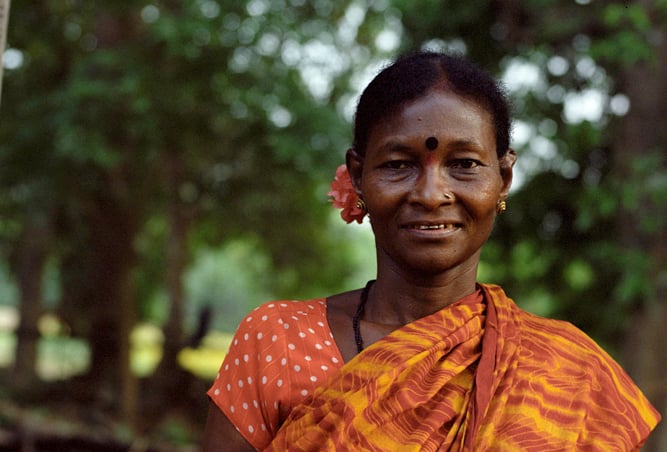
28 October 2015
Afro-Descendants: A Global Picture
Drawing on a range of case studies, this publication seeks to highlight the invisibility and discrimination that persist for people of African descent to this day, as well as celebrate their achievements as activists, artists and citizens.
- Central Africa
- Discrimination
- Minority stories
Reports and briefings
-
1 January 1984
The Sahrawis of Western Sahara
The Sahrawi people is fighting for its survival, working to reverse the illegal sale of its territory, in 1975, by the previous colonial…
Programmes
View all-
- Middle East (West Asia) (including the Gulf)
- Civil society
-
- East Africa
- Human Rights
Events
-
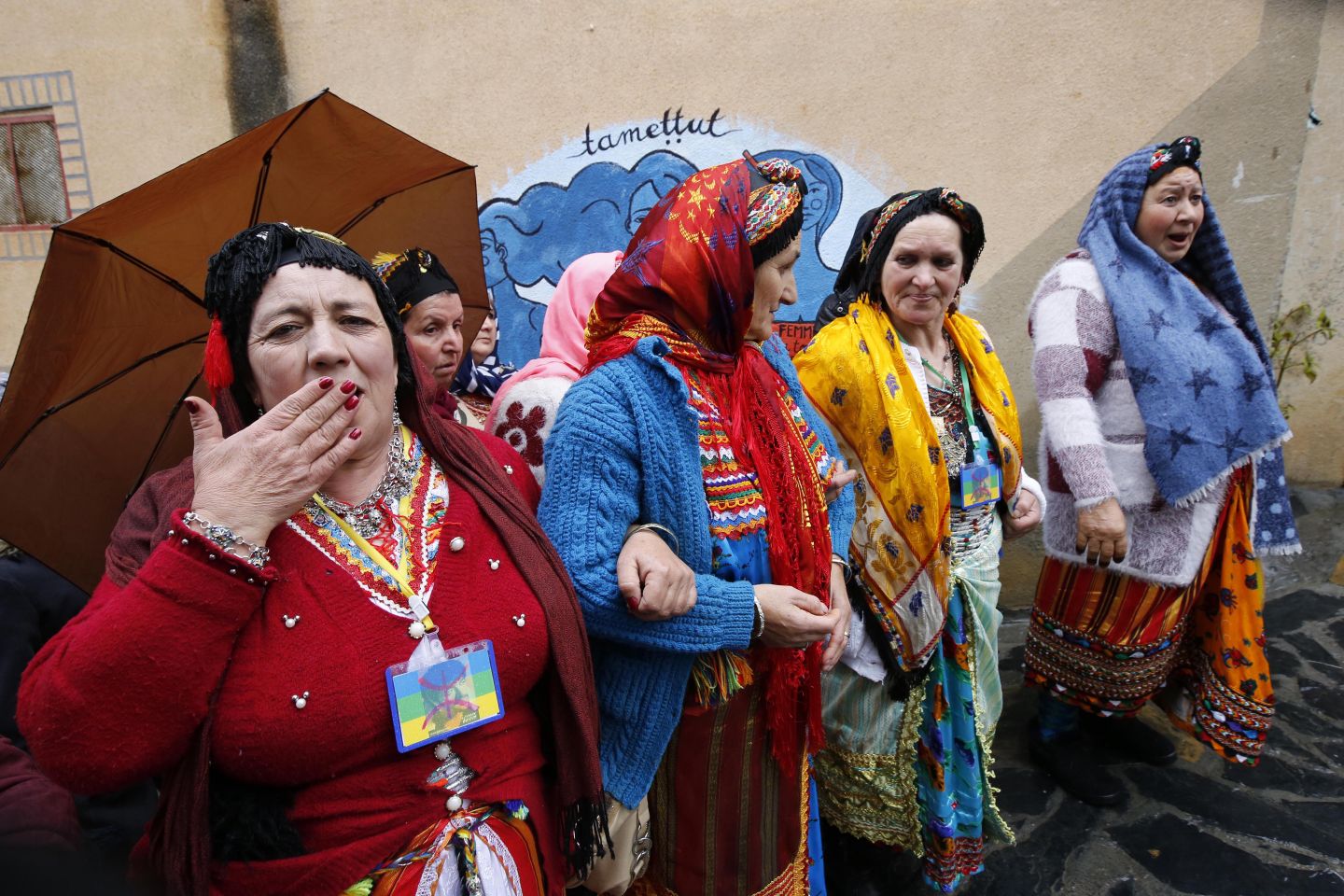 Video on demand
Video on demand 14 October 2022 • 1:00 – 3:00 pm CEST
Minorities and Indigenous Peoples in North Africa: Progress and challenges in Algeria, Morocco and Tunisia
Ahead of the 4th cycle of the UN Human Rights Council (HRC) Universal Periodic Review (UPR), which will review the human rights situation…
Partner Activities
View all-
- Morocco
- Amazigh in Morocco
- Indigenous peoples
- 2024
Atyaf Collective
- Morocco
- Capacity building
-
- Morocco
- Refugees and Migrants
-
Our strategy
We work with ethnic, religious and linguistic minorities, and indigenous peoples to secure their rights and promote understanding between communities.
-
-

